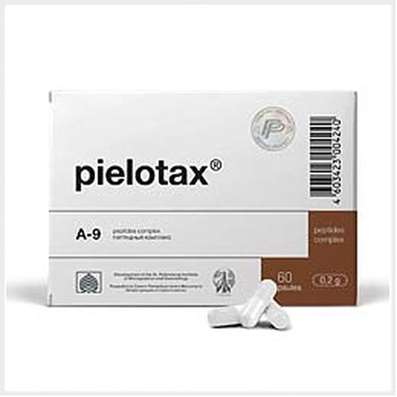Instruction for use: Ethrane
I want this, give me price
Dosage form: liquid for inhalation anesthesia vial (flacon) of dark glass 250 ml
Active substance: Enflurane*
ATX
N01AB04 Enflurane
Pharmacological group:
Anesthetic means
The nosological classification (ICD-10)
Z100 * CLASS XXII Surgical practice: Abdominal surgery; adenomectomy; Amputation; Coronary angioplasty; Angioplasty of the carotid arteries; Antiseptic skin treatment for wounds; Antiseptic Hand; Appendectomy; atherectomy; Balloon coronary angioplasty; Vaginal hysterectomy; The coronary bypass; Interventions in the vagina and cervix; Interventions on the bladder; Intervention in the mouth; Restoration and reconstructive surgery; Hand hygiene of medical personnel; Gynecologic surgery; Gynecological intervention; Gynecological surgery; Hypovolemic shock during operations; Disinfection of purulent wounds; Disinfection of wounds edges; Diagnostic intervention; Diagnostic procedures; Cervical Diathermocoagulation; Long-surgery; Replacing the fistula catheters; Infection in orthopedic surgery; Artificial heart valve; cystectomy; Short-term outpatient surgery; Short-term operation; Short surgical procedures; Krikotireotomiya; Blood loss during surgery; Bleeding during surgery and in the postoperative period; Kuldotsentez; laser photocoagulation; laser coagulation; retinal laser coagulation; Laparoscopy; Laparoscopy in Gynecology; CSF fistula; Small gynecological operations; Small surgical procedures; Mastectomy and subsequent plastic; mediastinotomy; Microsurgical operations on the ear; Mukogingivalnye operation; suturing; Minor surgery; neurosurgical operation; Immobilization of the eyeball in ophthalmic surgery; testectomy; pancreatectomy; Perikardektomiya; The period of rehabilitation after surgery; The period of convalescence after surgery; Percutaneous transluminal coronary angioplasty; Pleural thoracentesis; Pneumonia postoperative and posttraumatic; Preparation for surgical procedures; Preparation for surgery; Preparation of the surgeon's hands before surgery; Preparation of the colon for surgical procedures; Postoperative aspiration pneumonia in neurosurgical and thoracic surgery; Postoperative nausea; Postoperative bleeding; postoperative granuloma; postoperative shock; The early postoperative period; myocardial revascularization; Radiectomy; gastric Resection; bowel resection; uterine Resection; liver Resection; enterectomy; Resection of part of the stomach; Reocclusion of the operated vessel; Bonding tissues during surgical procedures; Removal of sutures; Condition after eye surgery; Condition after surgery; Condition after surgery in the nasal cavity; Condition after gastrectomy; Status after resection of the small intestine; Condition after tonsillectomy; Condition after removal of the duodenum; Condition after phlebectomy; Vascular surgery; Splenectomy; Sterilization of surgical instruments; Sterilization of surgical instruments; sternotomy; Dental surgery; Dental intervention in periodontal tissues; strumectomy; Tonsillectomy; Thoracic surgery; Thoracic surgery; total gastrectomy; Transdermal intravascular coronary angioplasty; Transurethral resection; Turbinektomiya; Removal of a tooth; cataract surgery; Removal of cysts; tonsillectomy; Removal of fibroids; Removing the mobile primary teeth; Removing polyps; Removing broken tooth; Removal of the uterus body; Removal of sutures; Fistula likvoroprovodyaschih ways; Frontoetmoidogaymorotomiya; Surgical infection; Surgical treatment of chronic limb ulcers; Surgery; The surgery in the anal area; The surgery on the colon; Surgical practice; The surgical procedure; Surgical interventions; Surgery on the gastrointestinal tract; Surgical procedures on the urinary tract; Surgical procedures on the urinary system; Surgical intervention of the genitourinary system; Surgical procedures on the heart; Surgical manipulation; surgery; Surgery on the veins; Surgical intervention; Vascular surgery; Surgical treatment of thrombosis; Surgery; cholecystectomy; Partial gastric resection; hysterectomy; Percutaneous transluminal coronary angioplasty; Percutaneous transluminal angioplasty; Coronary artery bypass; tooth Extirpation; Extirpation of milk teeth; pulpectomy; pulsative cardiopulmonary bypass; tooth Extraction; teeth Extraction; cataract extraction; Electrocoagulation; endourological intervention; episiotomy; Etmoidotomiya; Complications after tooth extraction
Composition and release form
1 bottle with liquid for inhalation anesthesia contains enflurane 250 ml.
Characteristic
Transparent colorless stable liquid, the purity of which exceeds 99.9% (when analyzed by gas chromatography). It has high stability under UV irradiation, in contact with aluminum, tin, brass, copper and iron.
Pharmachologic effect
Pharmacological action - anesthesia inhalation.
Indications for Ehtrane
Inhalation anesthesia (in combination with oxygen or with a mixture of oxygen + nitrous oxide).
Side effects
Overexcitation of the central nervous system during hyperventilation, increase or decrease in blood pressure.
Dosing and Administration
Inhalation (in a mixture with oxygen or nitrous oxide with oxygen) with the help of anesthesia apparatus (to shorten the excitement previously introduced barbiturate short-acting). An inhaled concentration of 2-4.5% provides anesthesia for 7-10 minutes. Surgical level of anesthesia is achieved at 0.5-3% concentration, maintaining concentrations - no more than 3% (for additional relaxation, muscle relaxants are used).
Analgesia: in childbirth occurring naturally, 0.25-1%; at a caesarean section - 0,5-1% as an addition to other analgesics.
Overdose
Symptom: excessive decrease in blood pressure.
Treatment: reducing the depth of anesthesia.
Precautionary measures
Ventilation should ensure that the carbon dioxide content in the arterial blood does not exceed 25-45 mm Hg.
Special instructions
The level of blood pressure during anesthesia is inversely related to the concentration of enflurane in the blood.
Storage conditions for Ethrane
At a temperature of 15-30 ° C.
Keep out of the reach of children.
Shelf life of Ethrane
5 years.
Do not use after the expiry date printed on the package.

 Cart
Cart





